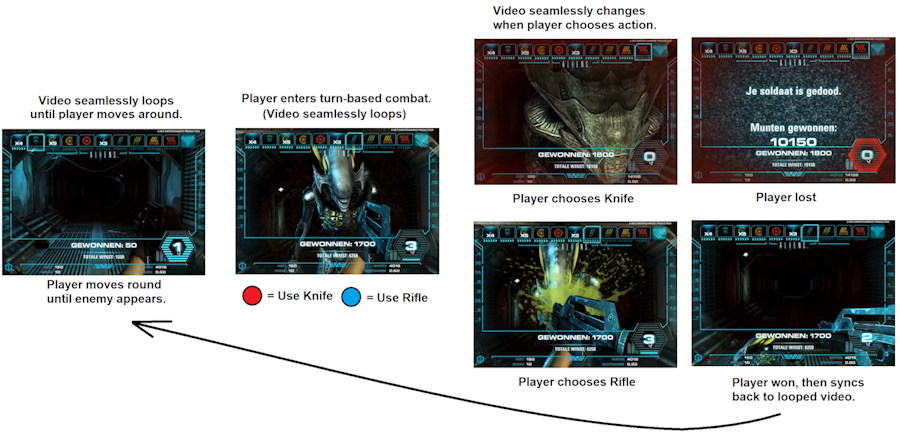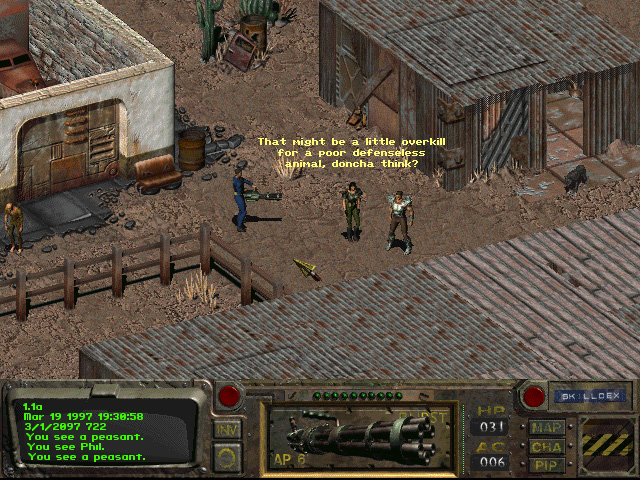Pseudo 3D Graphics
Pseudo 3D, also known as 2.5D, is a technique that creates the illusion of three-dimensionality using 2D graphics. It's used when a system can't handle the calculations needed for true 3D computer graphics, but can still modify 2D graphics.
The Blu-ray format doesn't support "advanced" real-time polygon 3D graphics. Instead, it usually supports 2D graphics. This means that developers have to be creative when using image and video codecs if they wish to create the illusion of 3D. Pseudo 3D can be used for interactive menus and video games.
One technique developers can use is pre-rendering, in which highly detailed graphics are rendered once on a powerful machine and then saved as video or image data to be played on a low-end device. Remember Donkey Kong Country and Toy Story? Those two classics made this technique famous. Pre-rendering is useful for making graphics "pop".
The advantage of pre-rendering is the ability to use graphic models that are more complex and computationally intensive than those that can be rendered in real-time in the player's CPU.The disadvantage of pre-rendering, in the case of video game graphics, is a generally lower level of interactivity.

|
|||
| Who Dares Defy Galactus? is a 2-player turn-based strategy BD game that uses animated AVC video and PNG sprites for its pre-rendered graphics. |
Full Motion Video graphics (or FMV) can help pre-rendered graphics be more immersive or interactive, but it's interactivity is limited by simple user input (depending on the appliction). Video graphics can be used for a background behind pre-rendered sprites. They can be used for graphical sequences for the user to obverse and make decisions.
 |
| An mock-up example of a turn-based first-person shooter using pre-rendered video graphics. A type of game like this would have simple controls. |
To make video graphics seamless, the video file(s) need to be close to its disc sector and not spread apart for quicker loading. There might be "slight" pauses depending on the player and depending of the video bitrate and length. Video can also be stored on the player's local storage for quicker loading, but the developer must be aware of the 256 MB storage space for Profile 1.1 players and 1 GB storage for Profile 2.0 players. Additional storage can added as well such as a USB.
Another technique is Axonometric or Oblique projections (often called Isometric Graphics), which can create a sense of depth and perspective in a 2D image.

|
| Fallout, a
PC game, is an example of a game that uses both pre-rendered graphics
and an Axonometric viewpoint to give it a 3D feel. |
Finally, parallax scrolling can be used to create a pseudo-3D effect by moving different layers of a 2D image at different speeds, creating the illusion of depth.

|
| Ukko's Journey, a homebrew Blu-ray video game, uses parallax scrolling using three separate 2D sublayers overlapping each other in the BD-J layer, foreground, middleground, and background. |
By employing these creative techniques, developers can add
depth and dimension to their content even without true 3D support from
the Blu-ray format. However, the developer should be mindful of the memory, local storage, and CPU limitations. So, the data size and
color bit of complex graphics like these should be as small as possible
to increase performance speed and conserve memory. The developer should be mindful of the BD-J's 45.5 MB graphics memory and 32 MB heap memory if one wishes to make compelling graphics and effects.
Popular Pages
-
HDMV (High Definition Movie) mode is an interactive framework with the well-known features of DVD, but it's more advanced than DVD m...
-
MPEG-2 Transport Stream Type of format Container format for video, audio, data First released August 2004 Latest relea...




